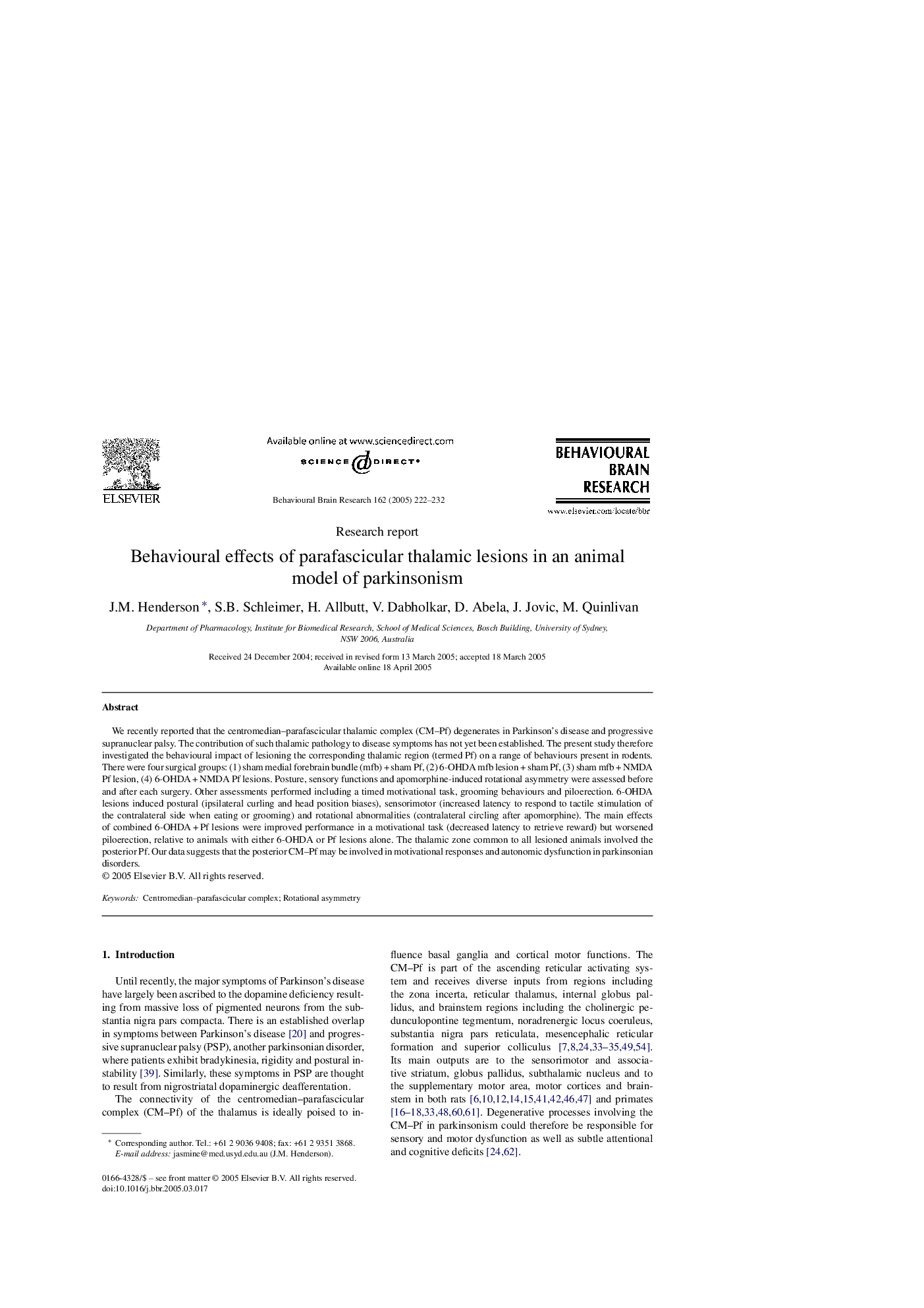| Article ID | Journal | Published Year | Pages | File Type |
|---|---|---|---|---|
| 9406409 | Behavioural Brain Research | 2005 | 11 Pages |
Abstract
We recently reported that the centromedian-parafascicular thalamic complex (CM-Pf) degenerates in Parkinson's disease and progressive supranuclear palsy. The contribution of such thalamic pathology to disease symptoms has not yet been established. The present study therefore investigated the behavioural impact of lesioning the corresponding thalamic region (termed Pf) on a range of behaviours present in rodents. There were four surgical groups: (1) sham medial forebrain bundle (mfb) + sham Pf, (2) 6-OHDA mfb lesion + sham Pf, (3) sham mfb + NMDA Pf lesion, (4) 6-OHDA + NMDA Pf lesions. Posture, sensory functions and apomorphine-induced rotational asymmetry were assessed before and after each surgery. Other assessments performed including a timed motivational task, grooming behaviours and piloerection. 6-OHDA lesions induced postural (ipsilateral curling and head position biases), sensorimotor (increased latency to respond to tactile stimulation of the contralateral side when eating or grooming) and rotational abnormalities (contralateral circling after apomorphine). The main effects of combined 6-OHDA + Pf lesions were improved performance in a motivational task (decreased latency to retrieve reward) but worsened piloerection, relative to animals with either 6-OHDA or Pf lesions alone. The thalamic zone common to all lesioned animals involved the posterior Pf. Our data suggests that the posterior CM-Pf may be involved in motivational responses and autonomic dysfunction in parkinsonian disorders.
Keywords
Related Topics
Life Sciences
Neuroscience
Behavioral Neuroscience
Authors
J.M. Henderson, S.B. Schleimer, H. Allbutt, V. Dabholkar, D. Abela, J. Jovic, M. Quinlivan,
